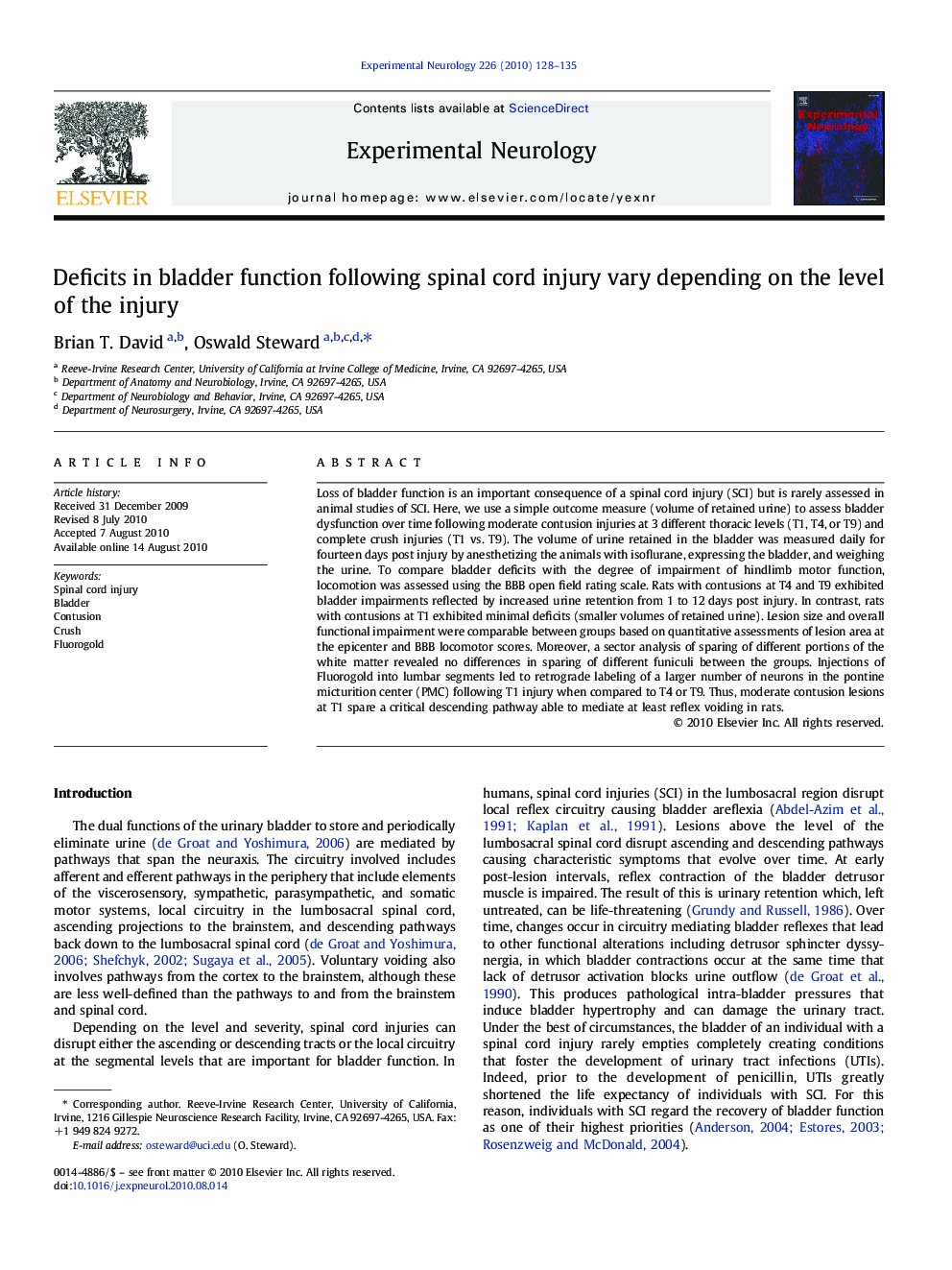| کد مقاله | کد نشریه | سال انتشار | مقاله انگلیسی | نسخه تمام متن |
|---|---|---|---|---|
| 3055960 | 1186546 | 2010 | 8 صفحه PDF | دانلود رایگان |

Loss of bladder function is an important consequence of a spinal cord injury (SCI) but is rarely assessed in animal studies of SCI. Here, we use a simple outcome measure (volume of retained urine) to assess bladder dysfunction over time following moderate contusion injuries at 3 different thoracic levels (T1, T4, or T9) and complete crush injuries (T1 vs. T9). The volume of urine retained in the bladder was measured daily for fourteen days post injury by anesthetizing the animals with isoflurane, expressing the bladder, and weighing the urine. To compare bladder deficits with the degree of impairment of hindlimb motor function, locomotion was assessed using the BBB open field rating scale. Rats with contusions at T4 and T9 exhibited bladder impairments reflected by increased urine retention from 1 to 12 days post injury. In contrast, rats with contusions at T1 exhibited minimal deficits (smaller volumes of retained urine). Lesion size and overall functional impairment were comparable between groups based on quantitative assessments of lesion area at the epicenter and BBB locomotor scores. Moreover, a sector analysis of sparing of different portions of the white matter revealed no differences in sparing of different funiculi between the groups. Injections of Fluorogold into lumbar segments led to retrograde labeling of a larger number of neurons in the pontine micturition center (PMC) following T1 injury when compared to T4 or T9. Thus, moderate contusion lesions at T1 spare a critical descending pathway able to mediate at least reflex voiding in rats.
Research Highlights
► Bladder function is impaired following moderate contusive SCI at T4 or T9, but not T1.
► Contusion injuries at T1, T4, or T9 yield equivalent locomotor deficits.
► Histology of SCI epicenter suggests similar injury severity at T1, T4, or T9.
► Retrograde labeling shows greater sparing of bladder pathway after T1, than T4 or T9.
Journal: Experimental Neurology - Volume 226, Issue 1, November 2010, Pages 128–135